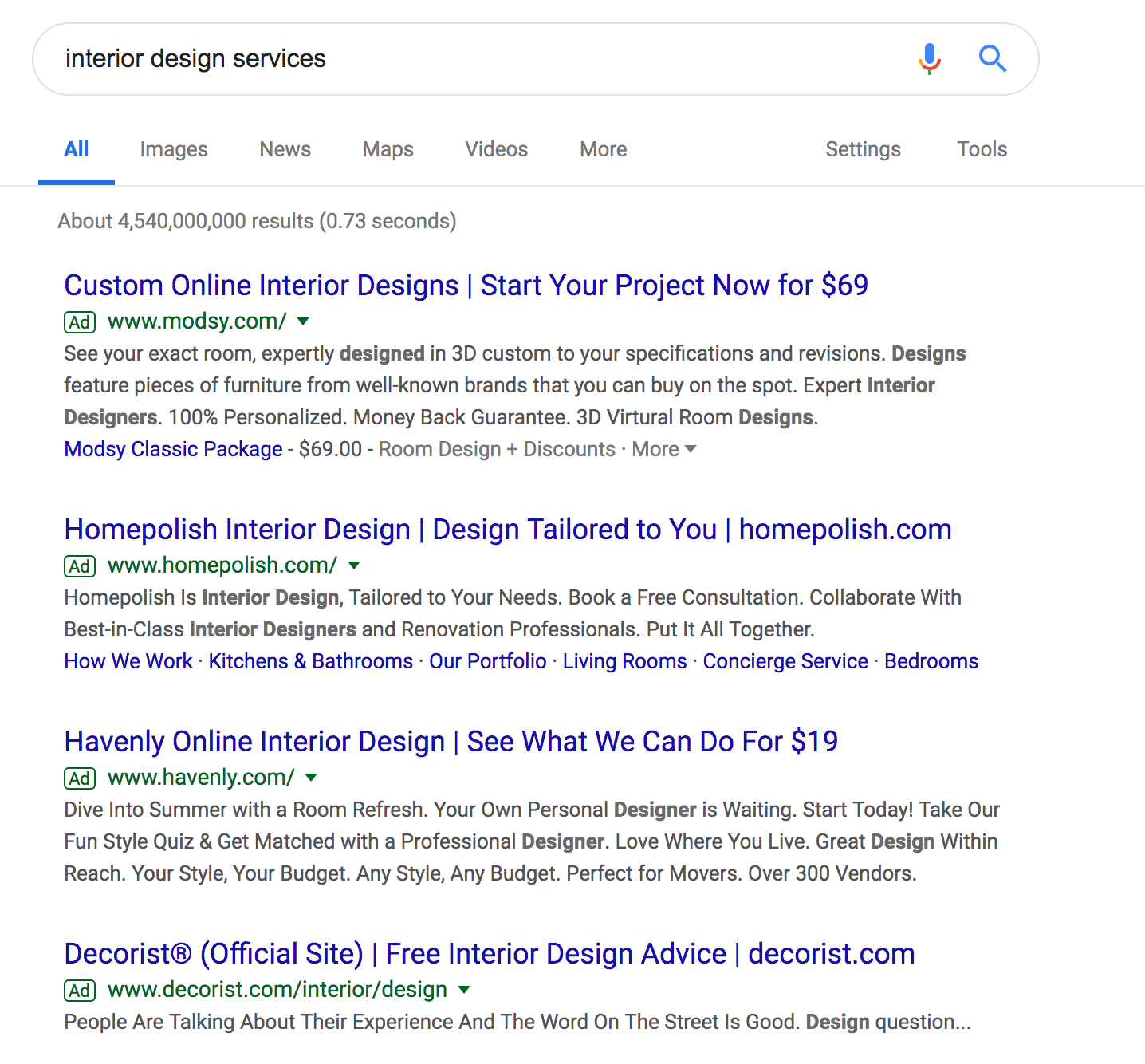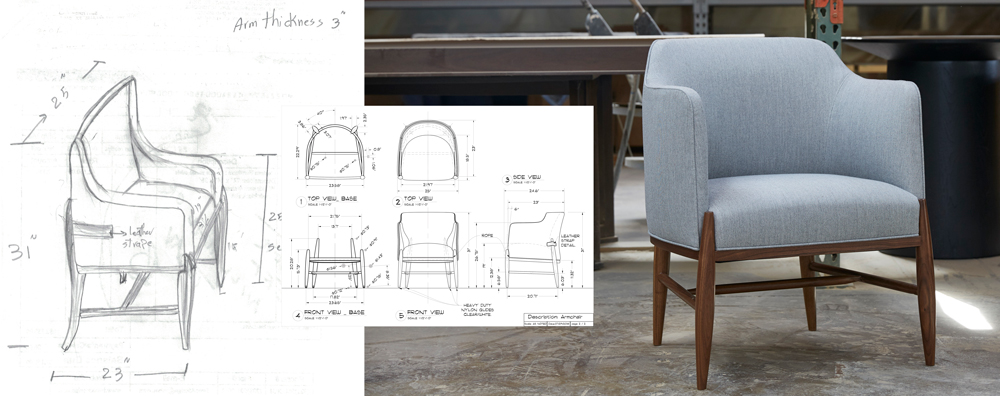Buildlane sits at the crossroads of three industries: interior design, tech, and manufacturing. I keep my finger on the pulse of other companies sharing that same intersection. Our founding principal has always been to elevate the interior designer, and in following that path I often think about the other startup companies going the opposite route of “cheapening” the designer craft. Everyone in Silicon Valley right now is looking for the next industry to Uber-fy. Is interior design the next target for the gig economy? And how have recent attempts to disrupt the industry been going?

It's wild that when you Google “interior design services” the entire above-the-fold section is filled with ads fulfilling your query at prices topping out at $69.

The natural defense mechanism for e-design is that this is only serving the very bottom of the market. With so many companies jumping at the opportunity to serve this part of the market, it certainly can't be a small audience. Venture capital firms have already invested $139M with Modsy, Havenly, Homepolish, and Laurel and Wolf. That is a big bet that inexpensive interior design is going to be the next big thing.
Who served this market before the e-design startups came calling? People looking for inexpensive design had a few options:
The latter two options still exist. That first option is probably long gone, with professional designers losing a piece of the market (albeit maybe one they’re happy to get rid of as it wasn’t the most profitable part of their operation).
However, you also have to concede that the designers that lived primarily in the bottom end of the market suddenly saw their work dry up. They were then faced with the option to start going for bigger clients or join the gig economy that the startups were creating for them.
Why work with interior designers when you can BE the interior designer? That seems to be the latest trend in retail furniture. Was it Restoration Hardware that first offered their “trade pricing” to the non-trade world? In any case, everyone quickly followed suit.
It seemed counter-intuitive, though. Interior designers had to make up a large segment of big retail’s customer base. Why alienate your business allies?
Because they too saw that there was an opportunity to devalue interior design work by setting up a table with fabric samples in the corner of their showroom and promoting the minimum wage sales associate as your new ambassador to the world of interior design. In fact, the first phrase on Room&Board’s website is “Free Design Services”. It doesn’t get any less expensive than that.

It is easy to dismiss the changing landscape of the industry by focusing on the value professional design provides and assuming your clients don't want to lift a finger on their own (which is necessary with most e-design). But you really can't discount the big bets venture capital is making and the continuous efforts by big retail to expand their bottom line.
If you're able to step back and acknowledge you've got a fight on your hands, how do you equip yourself with the best weapons?
I was listening to Kimberley Seldon’s Business of Design podcast recently and she was talking about what is changing in the industry (around the 15 minute mark on the podcast). Kimberley and her guests from Layers and Layers were discussing how the biggest change they've seen in the industry in the last 3-4 years is how designers are doing less custom work. Her guests had noticed that many designers are going straight to retail and working with the standard options provided for them. Kimberley had a great point that this is a big missed opportunity for the designer as her clients don't want to see their same furniture in their neighbor's homes and they could do that shopping without the designer.
This seems to be the most obvious way to protect yourself from the onslaught of e-design and big retail. Build custom.

Retail is well aware that 'custom' is something that can skyrocket the inherit value of a designers work and make the furniture priceless to the end client. I know this because retail loves to use the word custom in their marketing and advertising, even if they don't produce custom furniture.
A good example is the $27M venture backed startup Interior Define that uses the tag line "Custom-made sofas". I'll admit I actually like Interior Define's other business strategies, but any professional designer would clearly call their use of the word custom highly laughable.
E-design is limited by pre-fabricated furnishings that they are familiar with and big retail is handcuffed by their own product line. A designer that has the knowledge and experience of producing custom furnishings truly holds an advantage that can't ever be replicated by e-design or retail. This is the biggest shortcoming of retail competition that a designer can capitalize on. Not to mention, building custom furniture tremendously increases the capabilities of your design firm.
I think there is also something to be said for running a truly professional business with a wealth of past project portfolio photos and a reputation in the community. The difference between a professional designer and an amateur decorator trying to make extra income on an e-design platform shouldn't be understated.
But you should also be mindful that for potential clients that don't have a recommendation from a trusted friend, a Google or Houzz search might be their first entry point into discovering the interior design world. And when they do, is your interior design business truly differentiated enough to warrant the price tag?
Ready to start building furniture?